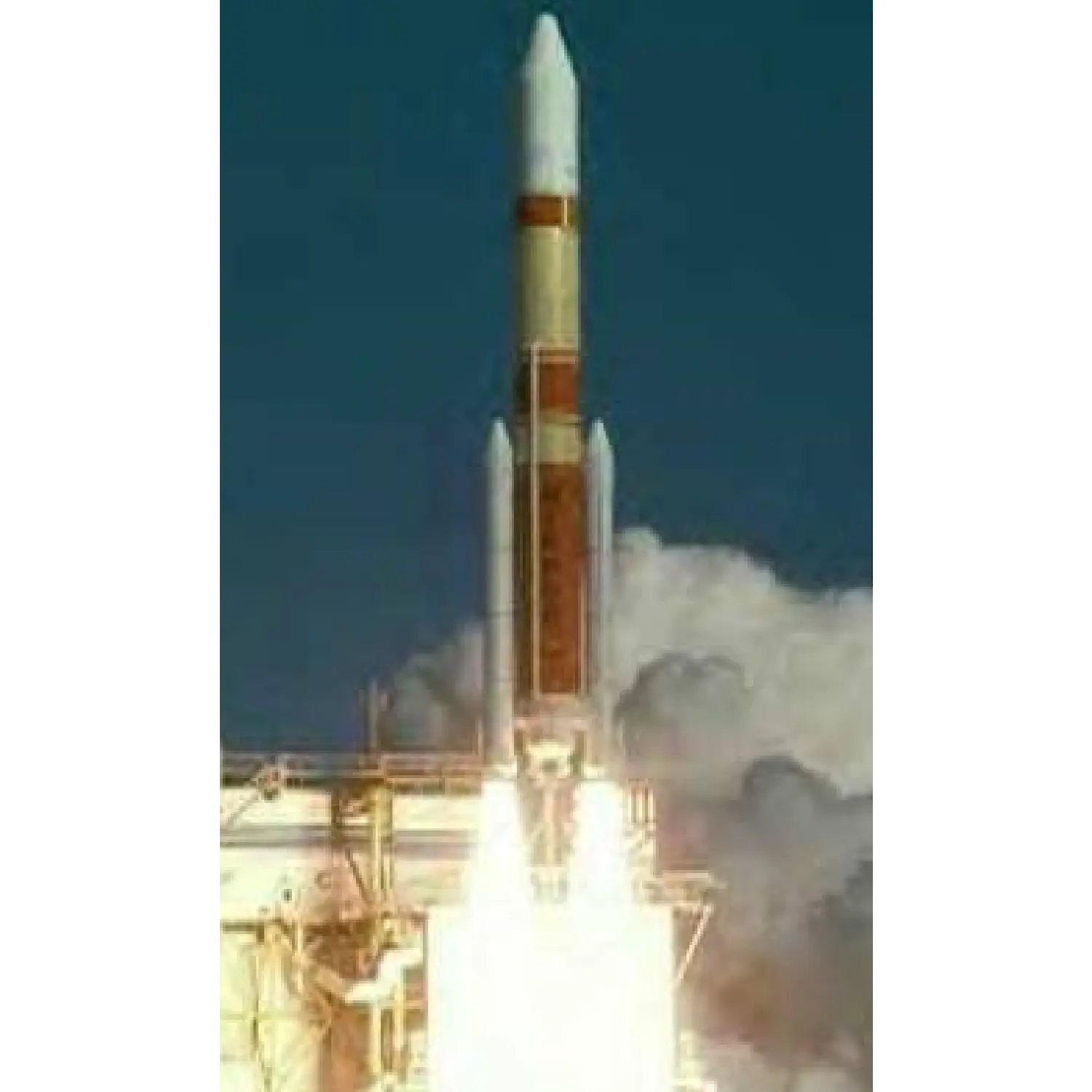/
Himawari 5 & SFU 1
Launch Success
Liftoff Time (GMT)
08:01:00
Saturday March 18, 1995
Mission Details
Launch Notes
First, and last flight of H-II (2 SSB).
Himawari 5
The GMS (Geostationary Meteorological Satellite), also called Himawari, built by Hughes Space and Communications Company (HSC) for Japan have provided uninterrupted monitoring of weather conditions since 1977 over more than 65 million square miles of the Pacific Basin - about one-third of the Earth's surface. With Nippon Electric Company (NEC) Corporation of Tokyo as the prime contractor to Japan's National Space Development Agency (NASDA), HSC was the major subcontractor responsible for the development and integration of the spacecraft. The satellites were built at HSC's Integrated Satellite Factory in El Segundo, Calif. The Japanese Meteorological Agency (JMA) is the end user and is responsible for operations. GMS collects and distributes weather data to other Asia Pacific countries and contributes to weather forecast services in countries from Australia northward to China, including Japan, Burma, Indonesia, Korea, Laos, Malaysia, Mongolia, New Zealand, the Philippines, Taiwan, Thailand, Tibet, and Vietnam. The principal instrument on board all satellites in the GMS series is the visible and infrared spin scan radiometer (VISSR), which is produced by Hughes' Santa Barbara Research Center. The spacecraft body carries the VISSR and spins at 100 rpm, while the antennas are despun and remain pointed toward Earth.
Geostationary Earth Orbit
1 Payload
SFU 1
SFU (Space Flyer Unit) was a Japanese space laboratory launched by the same H-2 + SSB rocket that launched GMS 5. It carried an infrared telescope (IRTS), and instruments and supplies for microgravity experiments. IRTS was Japan's first orbiting telescope dedicated to infrared observations (1 - 1000 micron range) of the interstellar medium, late type stars and interplanetary dust. IRTS instrumentation was attached to a multi-purpose Space Flyer Unit (SFU). The four primary science instruments were the Near Infrared Spectrometer (NIRS), the Mid Infrared Spectrometer (MIRS), the Far-Infrared Line Mapper (FILM), and the Far-Infrared Photometer (FIRP). All instruments were located at the focal plane of a 15-cm aperture telescope. Approximately 7 percent of the sky was surveyed during a four-week period. SFU was retrieved by the Shuttle STS 72 on January 13, 1996.
Low Earth Orbit
1 Payload
4,000 kilograms
Launch Site
Stats
H-II
3rd
Mission
1st
Mission of 1995
1995
13th
Orbital launch attempt

